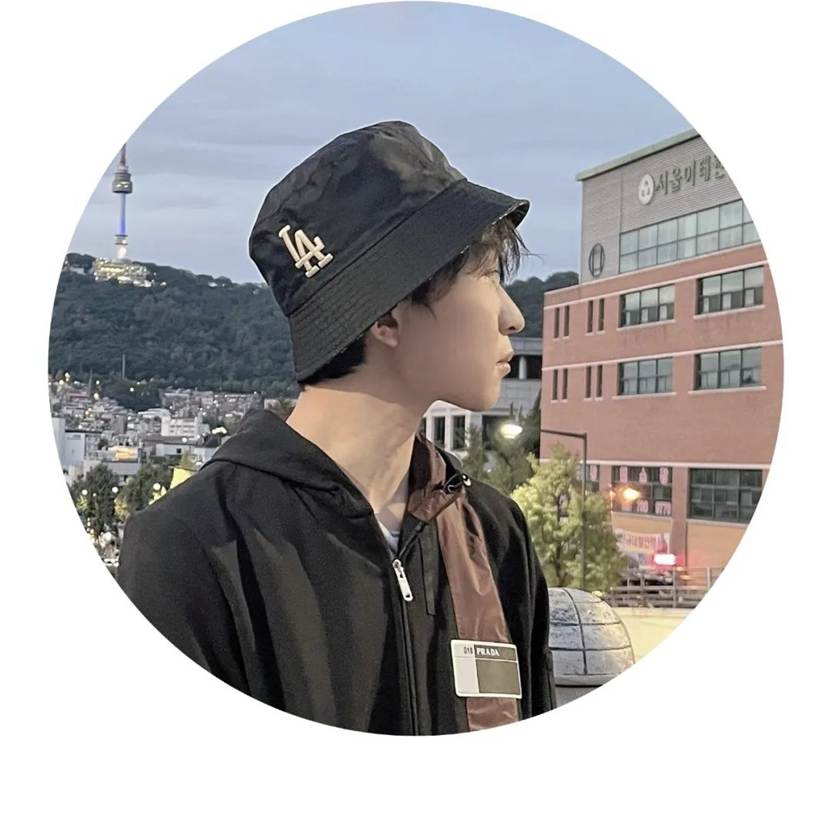
Hu Haoyu
Master of Visual Communication Design, Academy of Arts & Design, Tsinghua University
Awarded “Outstanding Master’s Degree Achievement” by Academy of Arts & Design, Tsinghua University in 2025
Work acquired by Academy of Arts & Design, Tsinghua University in 2025
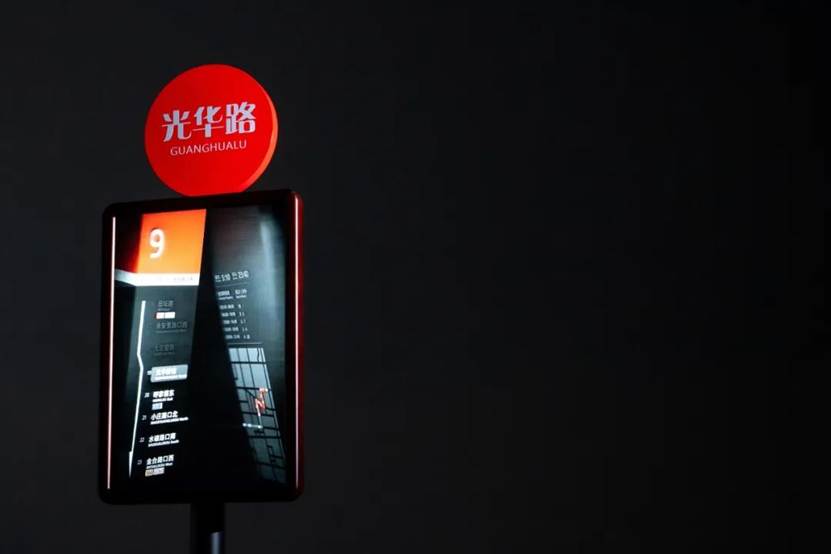
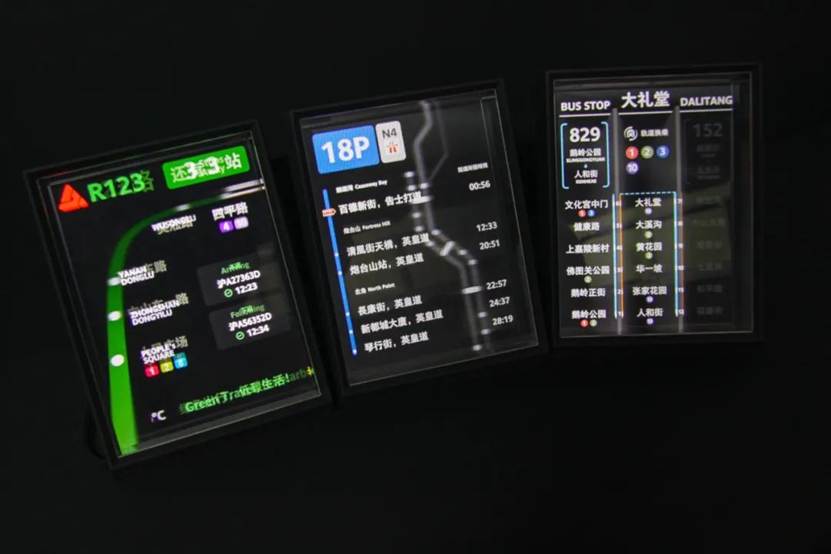
“Steps to the Way” Series
“Steps to the Way” is an enhanced bus information display design utilizing light field display technology. Viewers can observe different three-dimensional virtual spaces and graphic information by shifting their left and right viewpoints.
In recent years, society has seen an increase in issues like “multiple signs at one stop” and “multi-purpose screens,” which have, to some extent, reduced the efficiency and speed with which passengers acquire essential travel information. Unlike common LCD screens, light field displays offer a realistic, glasses-free 3D information reading experience, which can mitigate information clutter and dispersion. Passengers also won’t need to spend extra time waiting if they miss a carousel display; they can simply shift their position to get the information they need. By integrating specific visual mechanisms, the design further alleviates cognitive load during reading, allowing people to quickly grasp key information.
Identifying the Problem
Future information dissemination will inevitably intertwine two-dimensional and three-dimensional formats, with the synergistic development of engineering technology and visual design playing a crucial role in this evolution. While many mature XR headset products are currently on the market, establishing an important foundation for 3D information dissemination and expressing a beautiful vision for spatial reading, the immersive experience primarily focuses on amplifying individual sensory experiences and lacks public applicability. Combined with various other practical factors, these technologies have not achieved true widespread adoption.
Design Premise
There are two main reasons for using light field display technology, a medium that is both flat and three-dimensional, for this project. Firstly, as information carriers, text and images have historically remained primarily two-dimensional in the history of communication, and contemporary individuals are more accustomed to screen-based reading methods. Secondly, the glasses-free 3D characteristic of light field displays is also suitable for multi-person interactive scenarios in public spaces.
Given the high substitutability of technology, even if light field displays do not become the mainstream information dissemination medium in the future, the reading experience based on stereoscopic virtual space is gradually expanding the public’s visual perception, indicating an evolving trend.
Design Idea
Before redesigning the bus stop sign interface, an experimental framework was first established to ensure a good fit between design expression and technology. Twenty experiments were conducted based on this framework. After analyzing and adjusting the experimental results, the key design elements of the work were refined, revolving around the spatial characteristics of depth and dynamic perspective offered by light field display technology: visual size, focal plane, occlusion, and the use of reference objects. Finally, these spatial mechanisms served as the methodological foundation for the design.
Design Process
To achieve organized and controllable information organization in a stereoscopic virtual space, the project introduced a depth dimension on the basis of traditional two-dimensional grids, establishing a three-dimensional grid structure based on spatial hierarchy. This method utilizes the principle of relative proportion in design, dividing information into two basic layers: foreground and background.
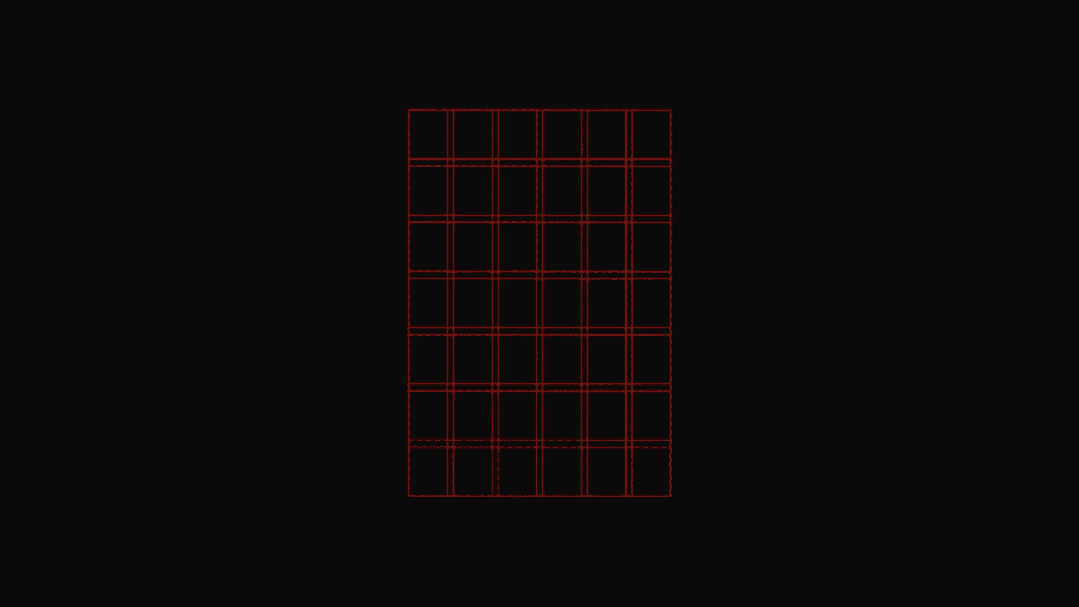
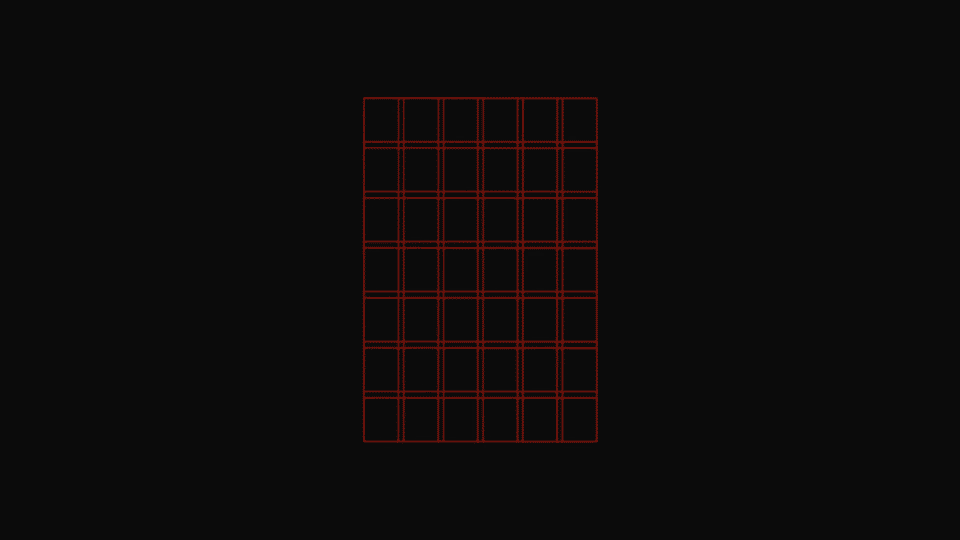
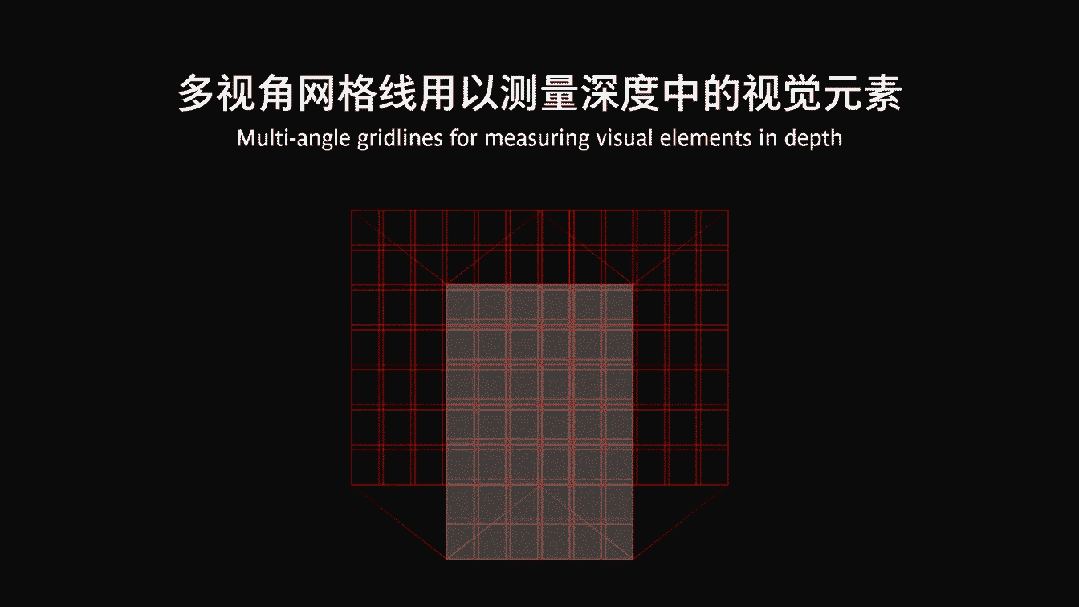
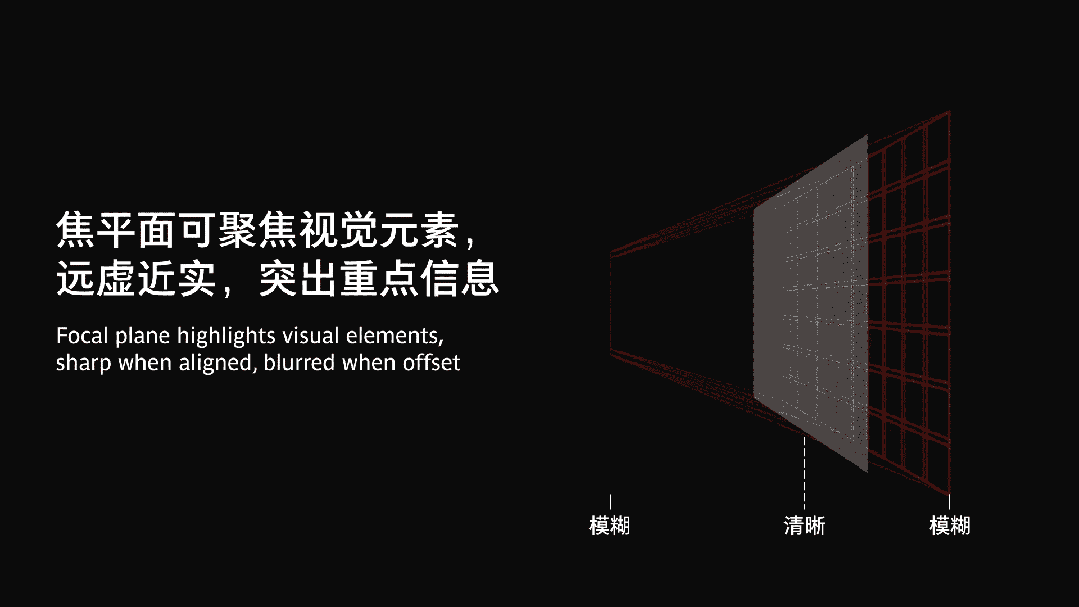
Stereoscopic Grid Design Process
Starting from the stereoscopic grid, visual rules such as focal points and relative object motion were incorporated into design considerations through experiments, allowing for more controllable determination of the movement range of interface information as a person moves.
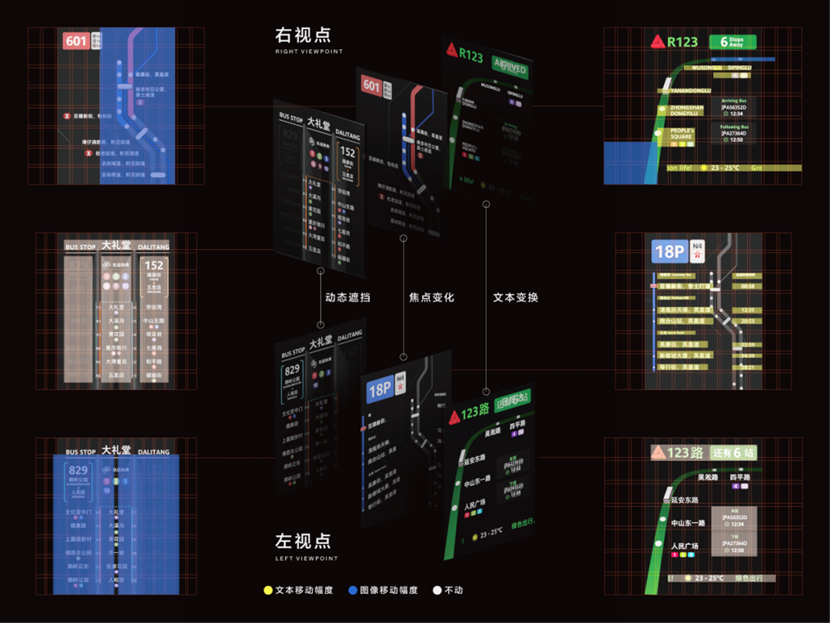
Movement Range of Text and Images with Viewpoint Changes
Different categories of graphic information emerge or move out of the screen as the viewer changes their viewpoint.
Design Highlights
Focus Fading: Based on the human perspective, graphic information closest to the center of the line of sight is highlighted, while non-essential information is faded or hidden, providing a smoother reading experience.
Focal Shift: Simulating the human eye’s focal shift mechanism, and leveraging the focal plane characteristic, content dynamically switches focus with changes in the viewer’s position or the passage of time, strengthening the correlation between different depth information and the reading rhythm.
Occlusion Reference: Occlusion not only affects the spatial expressiveness of a single visual element but also directly influences the overall spatial layout and information transmission process. Effective use of reference relationships can, to some extent, enhance the differentiation of different information layers.
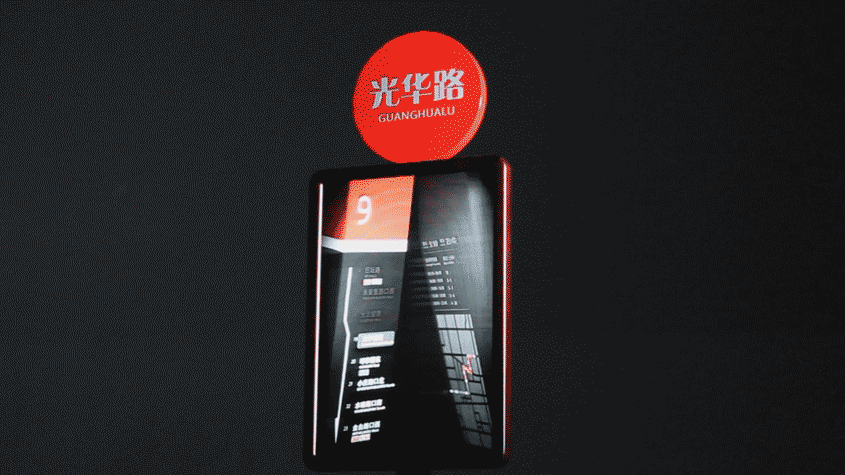
Focus Fading
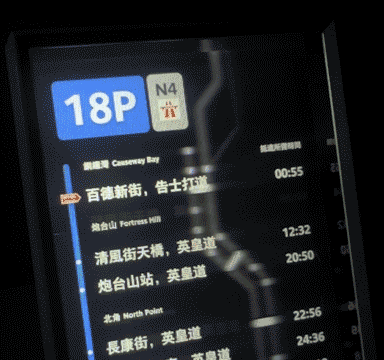
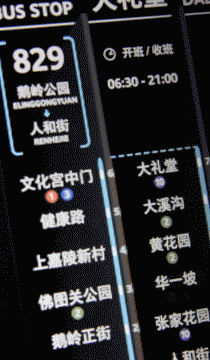
Focus Shift Occlusion Reference
Project Showcase
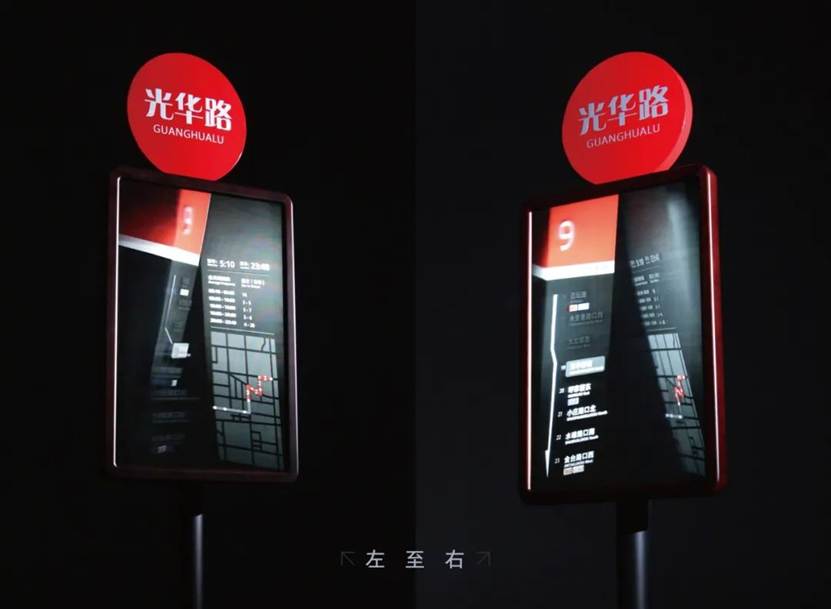
Guanghua Road Route 9
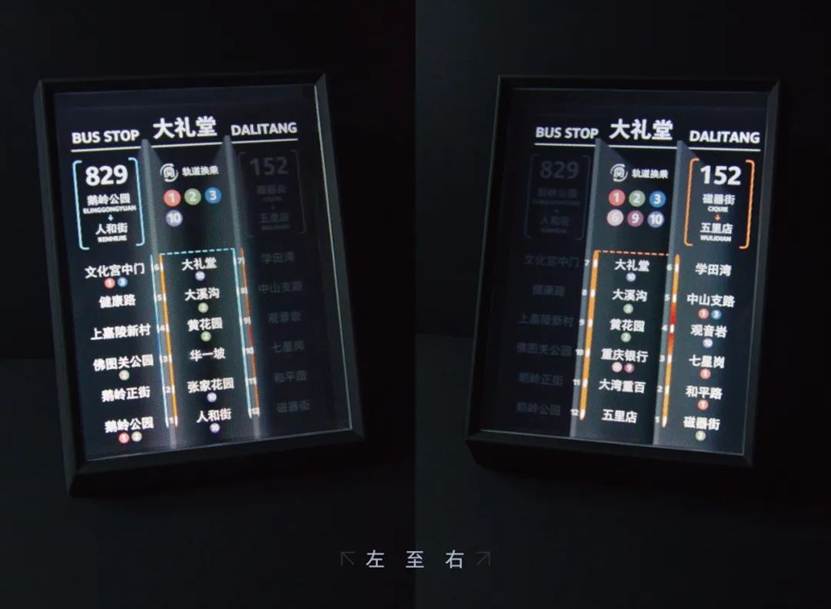
Renhe Road Routes 829-152
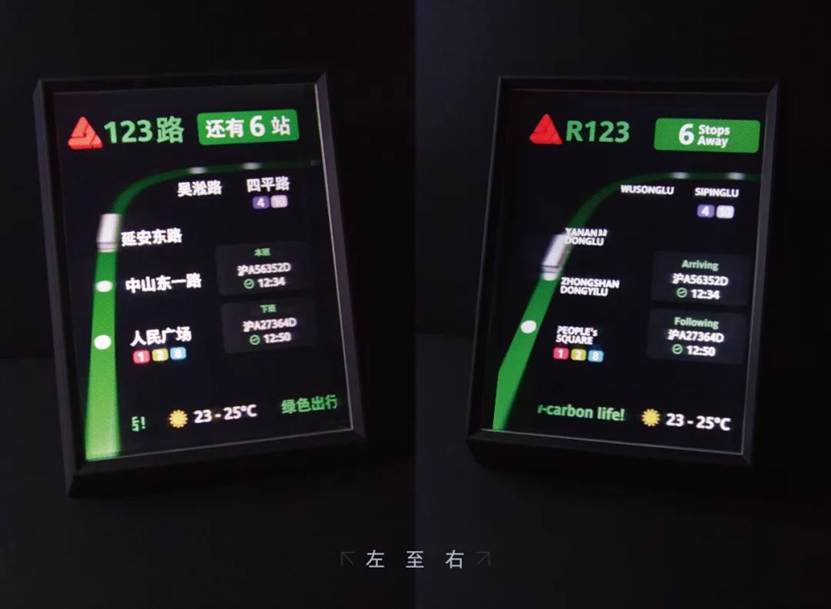
People’s Square Route 123
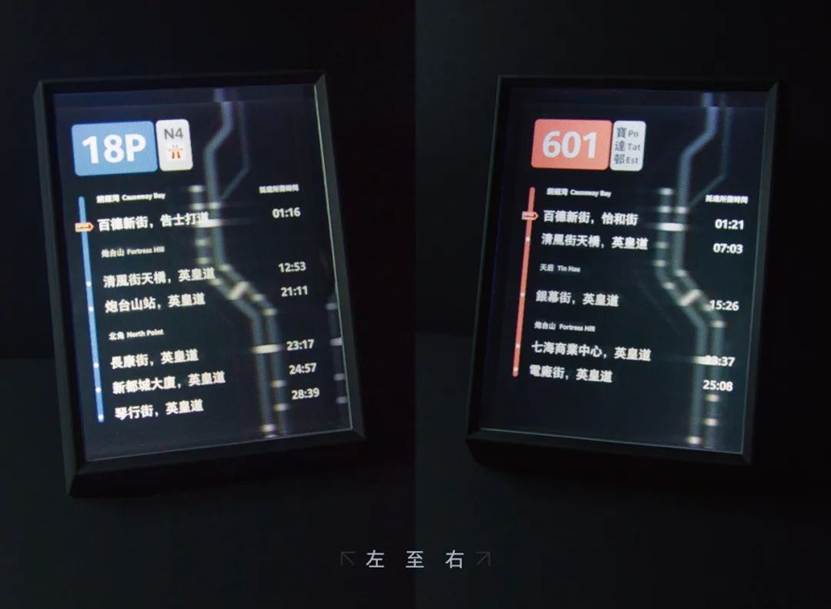
Baide New Street Routes 18P-601
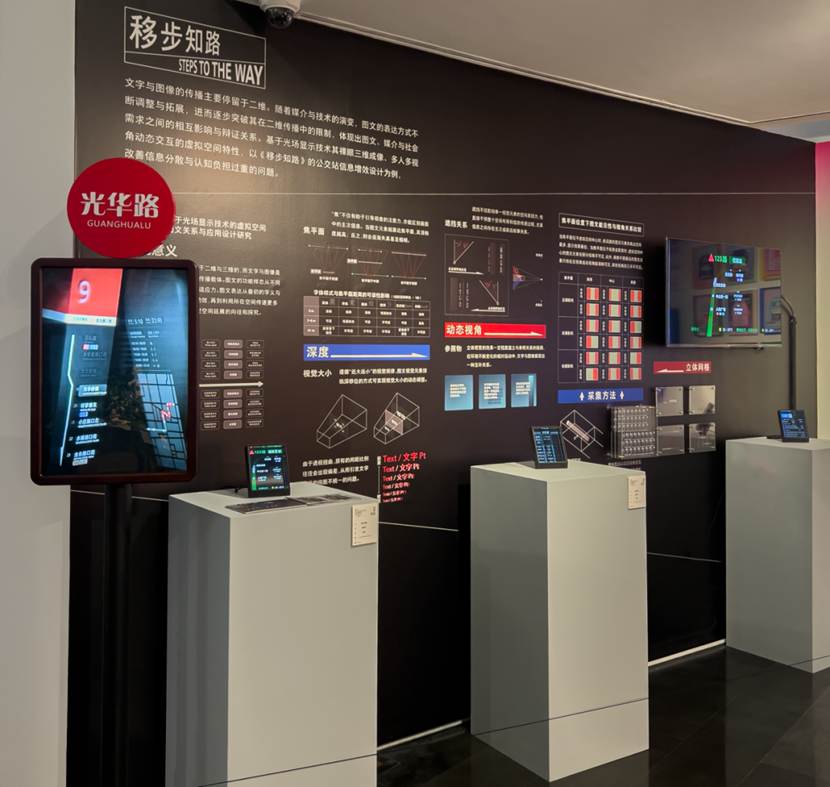
Exhibition Site
Advisor’s Remarks
“Hu Haoyu is a very calm and resilient student. He is thoughtful and values the study of fundamental professional principles, possessing a broad academic vision. Under the condition of relying on light field display, a glasses-free 3D technology, his graduation project and thesis demonstrate his humanistic reflection on the use and arrangement of text from a new technological perspective. He believes that ‘the factors determining the relationship between graphics and text exist beyond them,’ illustrating that the dissemination of graphic and textual information is not solely determined by the medium but is shaped by human cognition, behavior, and environment. This fully showcases the author’s rather broad research perspective.”
Professor Zhao Jian, Department of Visual Communication Design

